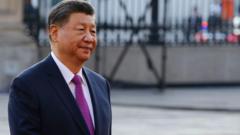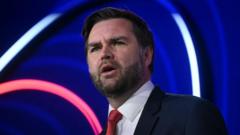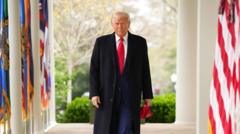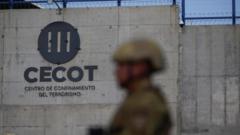Recent polling indicates a surprising turn of events for the Canadian Liberal Party, signaling potential implications for the upcoming elections.
**Political Turbulence in Canada: Liberals Surging Ahead Amidst Trump’s Trade War Impact**

**Political Turbulence in Canada: Liberals Surging Ahead Amidst Trump’s Trade War Impact**
Canadian political landscape shifts dramatically as Liberal Party gains momentum in federal elections thanks to President Trump's policy initiatives.
The Canadian Liberal Party, once seemingly on the verge of electoral disaster under Prime Minister Justin Trudeau, is seeing a notable resurgence as the countdown to the federal elections on April 28 intensifies. The recent dramatic shifts in public sentiment can largely be attributed to a series of events catalyzed by U.S. President Donald Trump’s trade policies and aggressive rhetoric surrounding Canada’s sovereignty.
As the election approaches, political analysts are taking a closer look at the poll data emerging since the beginning of the year, observing how voter preferences have evolved amidst external pressures. Since Trump's initiation of a trade war in early February, which included threats that stirred national concerns, the political ground has shifted significantly; the Conservative Party, once enjoying a robust lead, now faces the possibility of losing its foothold as the Liberals have taken a marginal lead.
Polls reveal that the Conservative Party’s support, previously bolstered by a significant 20-point advantage, has dwindled, leading to the Liberals now holding an average edge of six points. This remarkable turnaround highlights not only the influence of Trump but also the emergence of new leadership within the Liberal ranks that has rallied voter support.
Far from indicating a collapse of Conservative prospects, these shifts illustrate a more complex narrative—while the Liberals are gaining ground, the Conservatives are losing traction, particularly among their traditional voter demographics. As the election date approaches, the landscape remains fluid, with potential surprises on the horizon that could reshape the future political scene in Canada.
As the election approaches, political analysts are taking a closer look at the poll data emerging since the beginning of the year, observing how voter preferences have evolved amidst external pressures. Since Trump's initiation of a trade war in early February, which included threats that stirred national concerns, the political ground has shifted significantly; the Conservative Party, once enjoying a robust lead, now faces the possibility of losing its foothold as the Liberals have taken a marginal lead.
Polls reveal that the Conservative Party’s support, previously bolstered by a significant 20-point advantage, has dwindled, leading to the Liberals now holding an average edge of six points. This remarkable turnaround highlights not only the influence of Trump but also the emergence of new leadership within the Liberal ranks that has rallied voter support.
Far from indicating a collapse of Conservative prospects, these shifts illustrate a more complex narrative—while the Liberals are gaining ground, the Conservatives are losing traction, particularly among their traditional voter demographics. As the election date approaches, the landscape remains fluid, with potential surprises on the horizon that could reshape the future political scene in Canada.



















